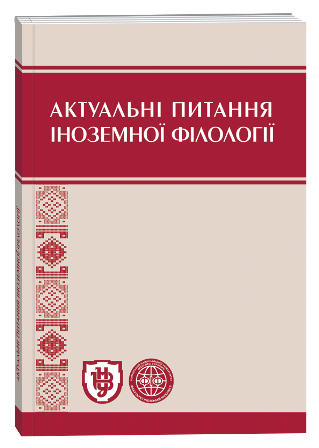LINGUISTIC FEATURES OF STANDARD PHRASEOLOGY IN ENGLISH AS A COMPONENT OF FLIGHT SAFETY
Keywords:
standard phraseology, ICAO, professional radio communication, air traffic controlAbstract
Standard phraseology is the core of Aviation English. It has been created to allow for clear and unambiguous communication between pilots and air traffic controllers. Air – Ground communication is the passage of voice and / or data between an aircraft and a ground station such as air traffic control or aircraft operating agency. Its most distinct feature is the use of a restricted set of vocabulary together with firmly given syntactical structure, in a way not dissimilar to programming languages. This ensures that each transmission is to a certain degree predictable and thus easier to understand. Syntactic, lexical, phonetic and semantic characteristics of the phraseology make it an essential tool for communication to convey the basic information necessary to ensure optimal and safe air traffic control. ICAO takes efforts on development the recommendations based on the analysis of aircraft crashes and accidents in the international civil aviation. It is emphasized that the main direction is the common influence of a man-aircraft and the environment. The main features characterizing the phraseology of the radio exchange were set out, namely: normativity (subordination to ICAO documents regulating the management of radio communication in English; use of English as one of the official ICAO languages in the process of negotiating on international airlines); obligation (mandatory reception and transmission of messages to the controller); extreme and time constraints (ability to transmit information in extreme conditions and time deficiency); making decisions in non-standard situations (ability to quickly and correctly accept and carry out the optimal decision); responsibility (responsibility for the safety of passengers’ lives); communication barriers during the transmission of messages (the presence of background noise on the frequency); the use of technical terms and abbreviations (the ability to correctly report the situation to the ATC controller about aircraft systems’ failures). The general problems of conducting radio-air-air “Ground-Air” were defined. The author’s definition of “professional radio communication” was suggested, which is an organized system of communication knowledge, skills and abilities, realized in the process of interaction of the subjects of the aviation industry, united by the common goal, tasks, specifics and conditions of professional flight activity and regulated by special ICAO aviation documents.
References
AGC Safety Letter [Electronic resource] / Eurocontrol. – August, 2005. – Access mode: http://www.skybrary.aero/bookshelf/books/121.pdf.
Aircraft Accident Report 4 / 2009 [Electronic resource] / Air Accidents Investigation Branch, Department for Transport. – July, 2009. – 70 p. – Access mode: http://www.skybrary.aero/bookshelf/books/780.pdf
Guidelines for Aviation English Language Program: ІСАО Cir № 323-An / 185. ICAO. – 2009. – 63 p.
Manual on the Implementation of ICAO Language Proficiency Requirements: Doc 9835 AN / 453. ICAO. – 2004.
Safety Letter. Air Ground Communications. Safety Improvement Initiative [Electronic resource] / Eurocontrol. – December, 2004. –– Access mode: http://www.skybrary.aero/bookshelf/books/117.pdf
Take off without permission: Eindhoven Airport. Dutch Safety Board. The Hague. – July, 2012. – 20 p.
Downloads
Published
How to Cite
Issue
Section
License

This work is licensed under a Creative Commons Attribution-NonCommercial 4.0 International License.







